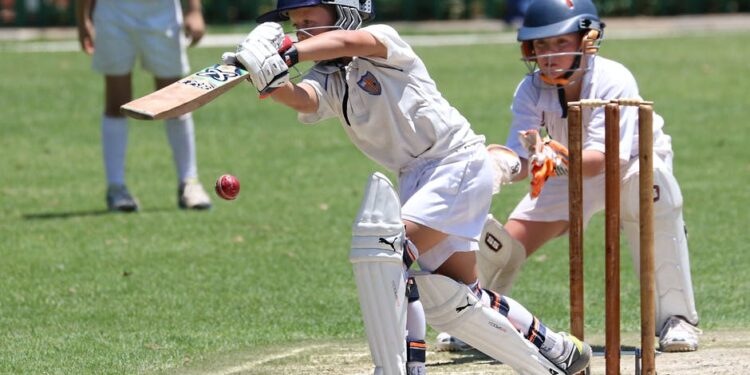Cricket, an ancient sport with roots stretching back centuries, has captivated audiences worldwide with its unique blend of athleticism, strategy, and tradition. This beloved game, originating in England during the 16th century, has evolved into a global phenomenon, attracting millions of fans and players across continents. Whether you’re seeking an engaging physical activity or a sport rich in history and tactics, cricket offers an unparalleled experience that combines teamwork, individual skill, and mental acuity.
What is Cricket?
Cricket is a bat-and-ball sport played between two teams of eleven players each. The game’s origins can be traced back to 16th century England, where it gained popularity among the aristocracy before spreading to the masses. Today, cricket is particularly popular in countries that were once part of the British Empire, including India, Australia, Pakistan, and the West Indies.
The basic premise of cricket involves one team batting while the other team fields. The batting team aims to score as many runs as possible, while the fielding team attempts to dismiss the batsmen and limit their scoring. The roles are then reversed, with the team that batted first now fielding, and vice versa.
Key elements of cricket include:
.The pitch: A 22-yard long rectangular area in the center of the field
.Wickets: Sets of three stumps with two bails balanced on top, located at each end of the pitch
. The bat: Used by batsmen to hit the ball and score runs
. The ball: A hard, cork-centered sphere covered with leather
How to Play Cricket
To play cricket, you’ll need the following essential equipment:
1. Cricket bat: Made of wood, typically willow, with a cane handle
2. Cricket ball: Hard leather ball weighing between 5.5 and 5.75 ounces
3. Wickets: Two sets of three stumps and two bails
4. Protective gear: Including pads, gloves, helmets, and protective boxes
The basic gameplay involves:
1. The bowler delivering the ball to the batsman
2. The batsman attempting to hit the ball and score runs
3. Fielders trying to catch the ball or run out the batsmen
4. Batsmen running between the wickets to score runs
Cricket requires a combination of physical prowess, mental toughness, and strategic thinking. Players need to develop skills in batting, bowling, and fielding, each of which demands different attributes and techniques.
Rules of Cricket
Understanding the rules of cricket is crucial for both players and spectators. Here are some fundamental rules:
1. Scoring
Runs are scored by batsmen running between the wickets or hitting the ball to the boundary (4 runs if the ball touches the ground, 6 runs if it clears the boundary without touching the ground).
2. Overs
An over consists of six legal deliveries bowled by one bowler. Teams take turns bowling overs from alternate ends of the pitch.
3. Dismissals
Batsmen can be dismissed in several ways, including:
– Bowled: The ball hits the wicket
– Caught: A fielder catches the ball before it touches the ground
– LBW (Leg Before Wicket): The ball would have hit the wicket if not for the batsman’s leg
– Run out: The fielding team breaks the wicket while the batsmen are running between wickets
4. No-balls and wides
Illegal deliveries that result in extra runs for the batting team and must be re-bowled
5. Follow-on: In multi-day matches, if a team trails by a significant margin after the first innings, they may be asked to bat again immediately
Types of Cricket
Cricket comes in various formats, each with its own unique characteristics:
1. Test Cricket
The longest and most traditional format, played over five days between national teams. Test matches are considered the ultimate test of a player’s skill and endurance.
2. One Day International (ODI)
A limited-overs format where each team bats for 50 overs. ODIs strike a balance between the strategic depth of Test cricket and the excitement of shorter formats.
3. Twenty20 (T20)
The shortest and most explosive format, with each team batting for 20 overs. T20 cricket has gained immense popularity due to its fast-paced nature and entertainment value.
4. First-class Cricket
Multi-day matches played at the domestic level, similar to Test cricket in format.
5. List A Cricket
Domestic limited-overs matches, typically 50 overs per side.
6. Women’s Cricket:
Includes all formats played by female cricketers, with growing popularity and recognition worldwide.
Benefits of Cricket
Engaging in cricket offers numerous benefits for both physical and mental well-being:
1. Physical Fitness: Cricket involves running, throwing, and quick movements, providing an excellent full-body workout.
2. Hand-Eye Coordination: Batting and fielding require precise coordination between eyes and hands, improving overall motor skills.
3. Strategic Thinking: The game demands constant tactical decisions, enhancing problem-solving abilities and mental agility.
4. Teamwork: Cricket fosters collaboration and communication skills as players work together towards a common goal.
5. Stress Relief: The focus required during play can serve as a form of meditation, helping to reduce stress and anxiety.
6. Social Interaction: Cricket clubs and teams provide opportunities for social connections and community building.
7. Leadership Skills: Captaining a cricket team develops leadership abilities applicable in various life situations.
Conclusion
Cricket, with its rich history and diverse formats, offers something for everyone – from casual backyard games to professional international matches. This sport not only provides physical benefits but also cultivates mental resilience, strategic thinking, and teamwork. Whether you’re a player or a spectator, cricket’s unique blend of tradition and excitement makes it a truly captivating sport. As cricket continues to evolve and reach new audiences, its timeless appeal ensures its place as one of the world’s most beloved sporting traditions.











